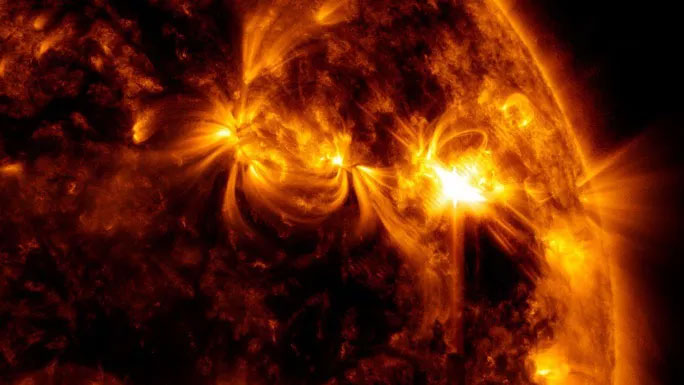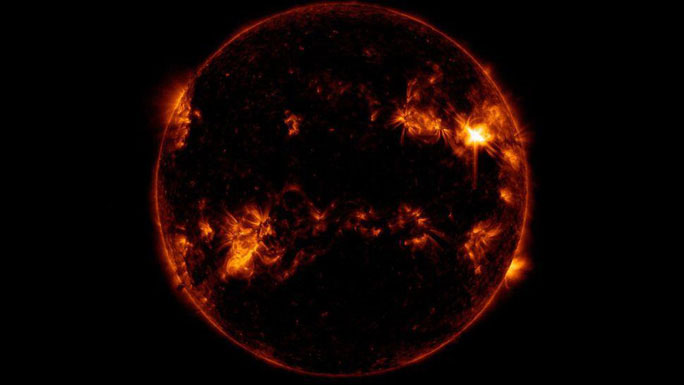The Solar Dynamics Observatory (SDO) of NASA has captured shocking images of how a fierce solar flare is preparing to bombard Earth.
According to Live Science, the SDO – a spacecraft orbiting the Sun at an altitude of 36,000 kilometers – recorded the flare classified as an M-class, which indicates a medium intensity. This is the flare responsible for the recent radio blackout.
NASA stated that the original images captured by SDO have a resolution ten times greater than that of high-definition television, providing fascinating and vivid details for scientists to study our volatile parent star.

The solar flare captured by NASA’s SDO spacecraft was the cause of a radio blackout last weekend. (Photo: SDO/NASA)
In the latest color-enhanced images, which are easier for the human eye to recognize, the brilliant flare can be seen emitting light in the ultraviolet part of the spectrum, indicating it has extremely high temperatures.
M-class “flare” is a relatively strong burst of energy, a sudden release of electromagnetic radiation exploding from the Sun, traveling at the speed of light toward an unfortunate target – in this case, Earth.
The National Oceanic and Atmospheric Administration (NOAA) has specifically classified it as M.96, which means it is not far from becoming the strongest X-class.

The solar flare blazing in a celestial angle in the panoramic photo – (Photo: SDO/NASA).
According to NOAA, the flare captured by NASA caused a radio blackout when it struck Earth. Radio waves travel across our planet by emitting particles that reach the ionosphere and then bounce back to Earth. However, this solar flare charged the lower ionosphere, causing the radio waves to lose energy as they passed through, being swallowed by the atmosphere.
This type of blackout primarily affects aviation and maritime communications, as well as other shortwave radio broadcasts. The ionization process may also disrupt signal transmission from navigation satellites, such as those of the U.S. GPS network.
This latest flare originated from sunspot number 2975, which is classified as complex in terms of magnetism and has emitted a total of 20 furious flares just in the past week. Some of these flares were accompanied by a coronal mass ejection (CME).
CMEs reach Earth slower than typical flares, but like a ticking time bomb, they disrupt the planet’s magnetic field, triggering beautiful auroras. Last week, auroras appeared on Wednesday night and early Thursday morning in Canada, northern regions of the U.S., and New Zealand.

















































